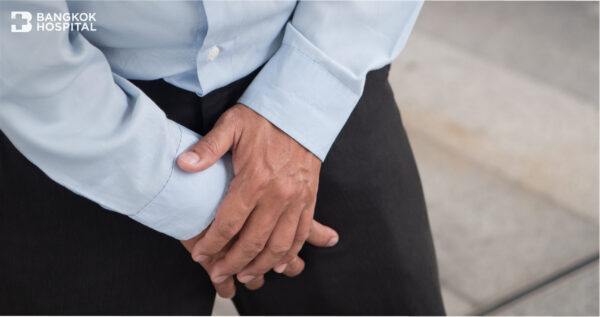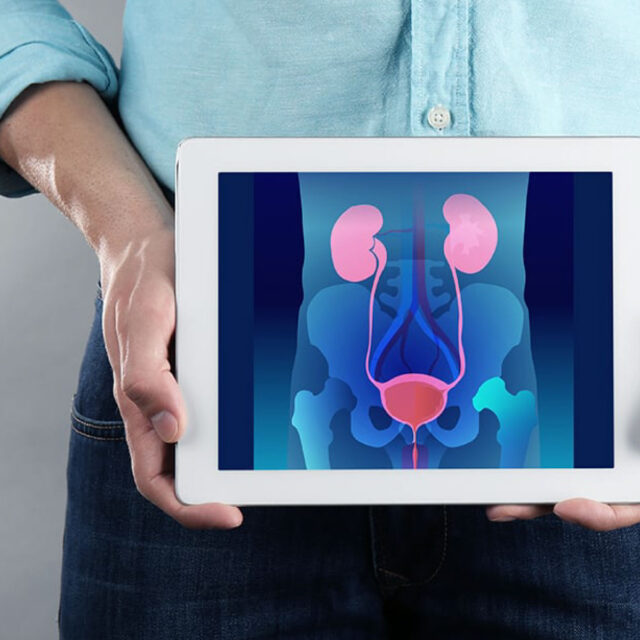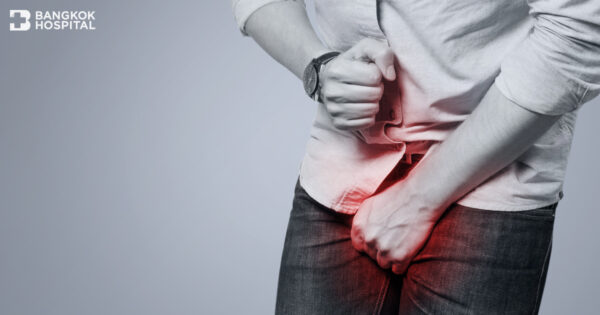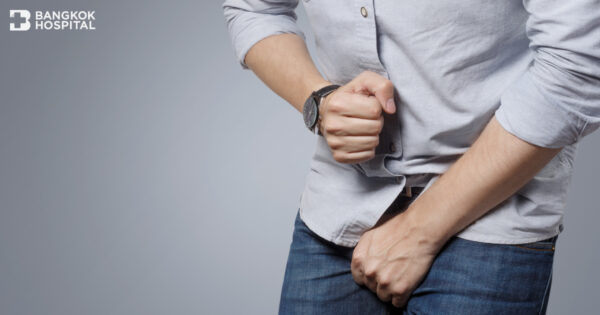For Thai males, there are 3 most common forms of prostate disease. Ranked first, at 80%, is enlarged prostate. The second rank at 18% is prostate cancer, and the 3rd most common prostate disease is the inflammation of the prostate (prostatitis) at 2%.
For all of us, as we age one thing that cannot be avoided is the decrease of hormone levels. In men, particularly as the level of andropause changes, it affects not only the body but also the moods and the psychology. It is similar to what happens in women during menopause. During this time, the most noticeable transformations are in the appearance. However, there are other changes happening internally that affects the urinary tract as well. These should not be ignored – be it the inability to hold urine, decreased sexual drive, or other ailments that will impact the prostate such as enlarged prostate and prostate cancer, etc.
What is Enlarged Prostate
Enlarged prostate, also known as BPH (Benign Prostate Hyperplasia), can be found in men over the age of 40; but it is more common among men who are 80 or more, as the hormone level has dropped. Normally, for a male, at the age of 20, the normal prostate size is about 20 g and will continue to grow with age. However, if we compare 2 men older than 60 years old, one may have the prostate size of 30 g but he can actually experience more symptoms than the other person whose prostate is 50 g. In this example, we would now classify the former as having LUTS (Lower Urinary Tract Symptoms) and not outright BPH (Benign Prostate Hyperplasia); even though the symptoms are almost all the same.
Symptoms of Prostate Diseases
Normally, as a man ages to 45 – 50, the larger prostate size will tighten the urinary tract. This causes irritation and a blockage, giving rise to more frequent urge to urinate. The symptoms can vary but the obvious ones are frequent urination – especially at night – having difficulty holding urine, or having to exert more pressure during urination. In some cases, the stream of urine is weak or intermittent and becomes mere dribbling near the end. Sometimes, there remains the urge to pass more urinate even after it has finished. In other cases, however, there may not be any prior warning sign but, all of a sudden, the person cannot urinate or experiences an extreme urge to urinate.
Enlarged Prostate Diagnosis
For the diagnosis, doctors today will begin by examining the patient’s medical history along with the blood and urine tests as well as a check on the strength of the urine stream. To obtain a clearer picture, ultrasound is also used to assess the change of the prostate size. In addition, during the physical examination, one basic and necessary step is the “Digital Rectal Examination”, to determine the condition and density of the prostate: its approximate size – in millimeter or grams, its characteristic – smooth or rough, soft or hard, and whether or not the patient experiences more pain than some minor discomfort during the rectal examination.
Enlarged Prostate Treatments
There are 2 methods for the treatment:
- Medication – The use of medicines (alpha blockers) to treat the symptoms by relaxing the constricted prostate. They include DHT blocker which stop male hormone and effect the prostate’s size, and herbal remedy known as “Saw Palmetto.” Any medication is will be prescribed by your doctor.
- In cases where symptoms do not improve after medication – even to the point of having to use a catheter to help the patient urinate – it may be necessary to perform a minimally invasive surgery through the bladder to scrape away tissues from parts of the prostate.
Minimally Invasive Urological Surgery
This is generally the most common method to remove the excessive parts of the prostate, especially in severe cases or for patients who experience other complications, using miniature endoscope and surgical instruments inserted through the urethra to relieve pressure.
However, this procedure must be performed only by an experienced surgeon as the patient will be numbed by local anesthetic around the lower part of the body. 3 – 4 days following the surgery, the patient must use a catheter for urination as it is necessary for the bladder to rest. The catheter can be removed once the urine appears to be clear. The patient will feel better after 2 – 4 weeks.
- Method 1: Transurethral Resection of the Prostate (TURP). This is the standard procedure. The surgeon inserts an endoscope through the urethra to remove or scrape tissue from parts for the prostate into small pieces, using a monopolar electrode which has minimal side-effect but can stop bleeding simultaneously.
- Method 2: Transurethral Resection – Vaporized of the Prostate (TURPV). This method is also known as “Plasma Kinetic” (PK). It uses a small implement with a bipolar electrode to remove the excess prostate tissues through vaporization. The electrode helps preserve other surrounding tissues so that they are not damaged. This method is similar to the use of a laser beam to vaporize the target tissues.
Laser Surgery
In addition, there are other surgical procedures that use laser.
- Greenlight Photo-Selective Vaporization of Prostate (PVP). This innovative procedure is a more effective method to treat enlarged prostate. It reduces blood loss, discomfort, and recovery time. The goal is to be as minimally invasive as possible. Similar to the other such surgeries, an endoscope is inserted through the urethra. However, instead of scraping, a high-powered laser beam is aimed at parts of the prostate that are causing the blockage. The laser beam then gradually vaporizes the target tissues. An advantage of this method is that there is less blood loss and is, therefore, suitable for men of advanced age or with comorbidities – such as heart diseases. It can be considered a gentle procedure that offers less discomfort and shorter recuperation time. The patient can return to a light routine within 2 – 3 days. There is minimal risk of complications and is, thus, appropriate for older seniors or patients who cannot stop blood clod prevention medicines. During the procedure, the anesthetist will administer spinal block and position the patient for the surgery. The surgeon then inserts the specifically developed endoscope through the bladder. The procedure is guided by the live image displayed on a monitor. The surgeon will mark areas of the prostate to be removed with the laser beam. The heat generated by high-power beam of 120 – 180 W radiates from the sides of the instrument’s tip. Small bubbles can be observed as the targeted tissues that cause the blockage begin to progressively vaporize, leaving soft yellowish-white remanence. With this method, blood loss is minimal as the urinary tract is unblocked.
- Thulium Laser Vaporesection of the Prostate. This is another surgical method that utilizes laser. It gives comparatively as good a result as the PVP procedure. The only difference is the use of thulium laser, which cuts tissues causing the blockage into small pieces and allows them to be extracted from the prostate. These tissues can then be further examined, in case the patient is at risk of prostate cancer. Also, because thulium laser does not damage deeper tissues, it can be used to treat other urethral stricture conditions. After the procedure, a catheter is put in place overnight and will be removed the next day, as the patient begins to urinate by himself. The symptoms will gradually improve.
Preventing Enlarged Prostate
Enlarged prostate can be prevented simply by modifying your daily habits. For example:
- Drink water regularly at least 8 glasses every day.
- Avoid drinking a lot of water at once, especially before bed time.
- Avoid drinking tea, coffee, and alcohol.
- Urinate normally as needed. Do not hold urine nor should you force urination.
- Empty the bladder properly every time you urinate. Repeat if necessary. Do not hold back any urine.
- If you notice any unusual symptom, consult your doctor promptly for proper diagnosis and a course of treatment; thus, preventing worsening conditions later on.















